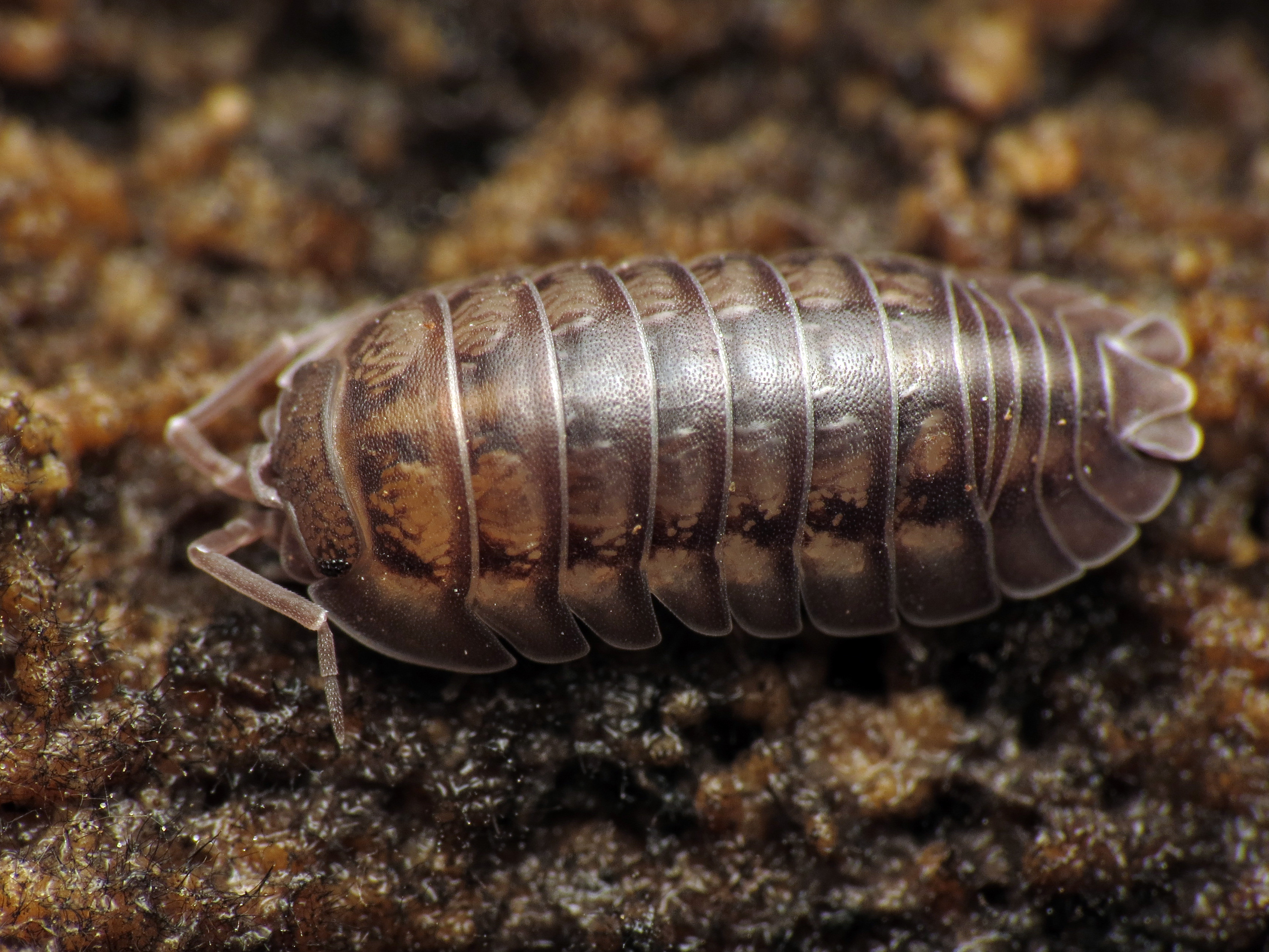Macrofauna are the larger critters living in the soil on Owl Acres. We are familiar with most of them. Millipedes, centipedes, true spiders, ants, earthworms, certain beetles, harvestmen ( AKA Daddy Longlegs) wood lice, termites, slugs, and snails. Along with these soil lifers, larvae and nymphs of many insects live and grow in the soil before emerging as adults. These larger animals and insects remodel the soil, adding organic materials, tunneling to create new air spaces, and breaking down both organic and inorganic substances to add and recycle nutrients. They also move material from one place to another and mix it with the clay and silt. Let’s look at a few of them.
Ants are thought to be the most ancient of these soil-dwellers. With some 12 to 20,000 species, ants exhibit a broad range of life styles. Those that build their nests in the soil have a significant impact on the surrounding ecosystem. As they build their nests and come and go, foraging for food, they mix organic material with the minerals in the soil, enriching the soil. Some farm aphids or fungi, while others forage for plant and animal detritus. They create spaces in the soil and generally raise the PH.
Opiliones, known as harvestmen, are members of the arachnid class but are not spiders. They don’t have silk glands so don’t spin webs. They’re about half an inch long and are usually brown or black. They also don’t produce venom. They have eight long spindly legs and one pair of eyes that don’t see very well. Unlike most arachnids, their body doesn’t have a clear division into thorax and abdomen so it looks globular. They’re called harvestmen because they emerge around harvest time to mate. I’ve always known them as daddy longlegs, but that name can apply to some types of real spiders as well. One defensive strategy Opiliones employ when things get really tough—they detach a leg and leave it behind, wiggling for up to an hour to distract a predator. The leg doesn’t grow back, so it’s not something they’d want to do every day. They live in the upper layers of soil and leaf litter, eating and recycling plant debris, or in some cases hunting for smaller critters to eat.
Isopods, AKA wood lice, pill bugs, potato bugs, or roly polys, are tiny cousins of lobsters and crabs. In the category of crustaceans, they have armor-plating on their backs which is segmented so that they can roll up in a tight ball. That’s how they get the names pill bug or roly poly. When they’re not rolled up, their head bristles with two sets of antennae and four “jaws” used for eating along with a pair of compound eyes. The middle part of the body has seven segments, each one supported on a pair of walking legs. The abdomen has another six segments of armor plating and 5 pairs of appendages modified for breathing. Since their ancestors came from the ocean, they still have a form of gills that they use for breathing. Females have a fluid-filled breeding pouch on their underside where eggs are produced and young hatch and remain for some time before venturing into the world.
Wood lice are important wood and plant decomposers. They break down the plant materials into much smaller pieces with increased surface area for the fungi and bacteria to digest. Another benefit they provide to the soil is removing metals such as copper, cadmium, lead and zinc. Between 3500 and 5,000 species of terrestrial isopods have been identified, some of which undoubtedly live right here on Owl Acres in the top layers of soil under logs, rocks and leaf litter.
Chilopoda or Centipedes are hunters. They live in the top layer of soil and prey on targets such as worms, crickets, cockroaches, silverfish and other insects, spiders and smaller centipedes. Their front legs have evolved into claws which they use to grab prey and inject venom. Like spiders, centipedes cover their prey with digestive enzymes and then suck up the resulting liquid. They have a long, flattened body divided into segments. Each segment has a pair of legs, and the house centipede can run pretty fast—1.3 feet per second (or 0.89 miles per hour). Some 4,000 species belong to the soil centipede order Geophilomorpha, and undoubtedly some of them live on Owl Acres.
The richest, most productive soils are those with about 50% air space and a healthy mix of organic and inorganic components. The macrofauna in the soil, along with their smaller partners, are crucial members of the underground world. Without all the living and recycling that goes on down there, the soil could not support the plants that provide us food. And here I always thought it was just dirt!
Photo by Katja Schultz Alt text: Close up photo of a brown, segmented critter with elliptical, flattened dome-shaped armor. Wood louse, pill bug or roly poly, pick up a piece of wood that’s been in the dirt for a while and there she’ll be, with a bunch of her closest friends and relations.
